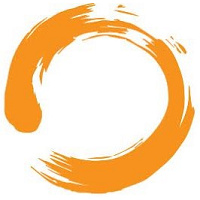If you think of a person who fully believes in him- or herself, one who is not blocked or limited by their thoughts or beliefs about what’s possible or what they are capable of achieving in the world, you likely picture someone who has a high level of positive energy and engagement in whatever it is they’re doing.
Now if you think of a person who falls to the other end of the spectrum, one who constantly doubts their own ability and sees the world as being against them, you likely picture someone who has a fairly high level of negative attitude, coupled with low energy and engagement in whatever it is they’re doing (other than complaining and blaming).
And then there are all the people who fall somewhere in between, people whose energy and engagement goes up or down depending on what the specific challenge is and how much they happen to believe in themselves and their abilities in that area.
What makes the difference for different people – or for the same person in different situations? There are four basic categories of thoughts that hold people back or block us from showing up in the world “all the way.” These are Limiting Belief, Interpretation, Assumption, and Inner Critic.
Thoughts Type #1: Limiting Belief
A limiting belief is defined by the Institute for Professional Excellence in Coaching (iPEC) as “Something that you accept about life, about yourself, about your world, or about the people in it, that limits you in some way.” Examples might be “People are mean” or “It’s a dog-eat-dog world.” How do these beliefs impact how you feel about and approach a project or situation?
As a coach, I find the best way to bust through limiting beliefs is to get curious about them. How true are they, really? Where did that idea come from? What evidence do you have that supports that belief? What evidence do you have that does not support that belief? How does that belief limit you? What would it require for you to let that belief go?
Coming at it from another angle, how different would the impact of beliefs like those above be on your outlook and attitude toward the world around you – especially in moments of stress – compared to beliefs like “People are generally good at heart” or “People yearn for connection and to be part of something bigger than themselves” or “There is plenty of room for everyone – and in fact, we create more opportunity by working together”?
Thoughts Type #2: Interpretation
An interpretation is defined by iPEC as “An opinion or judgment that you create about an event, situation, person, or experience and believe to be true.” It is the story you tell yourself about the things going on around you. It is Plato’s “Allegory of the Cave.”
Interpretation is my personal favorite of the categories, probably because it is so tied to storytelling, which as a writer I find to be rich with possibility. The world is a complex place, and when things happen, we often have little idea of the entire story – whether that’s all the events leading up to it, the thoughts and considerations going on in someone else’s mind, the various emotions and perceptions of all the various parties involved, or their actual (and sometimes mixed) intentions. So what do we do? We make things up to fill in the gaps.
When we make up a story that feels supportive to us and keeps us positive, energetic, and engaged, that’s working well for us. When we make up a story that undermines our confidence, cuts us off from people, and makes us feel deflated, that isn’t working so well for us.
Some self-coaching questions you can ask around your interpretation of an event include things like: What’s another way to look at that? What story might someone who loves you tell about that event? How would someone with the completely opposite viewpoint from yours describe the situation? How would a complete stranger to the situation interpret what’s going on?
Once you have a few different options for how to look at things, choose the one that makes you feel the best – the one that most empowers you.
Thoughts Type #3: Assumption
An assumption is defined by iPEC as “An expectation that, because something has happened in the past, it will happen again.” Within the definition lies the most powerful question you can ask about an assumption: Just because it happened in the past, what makes you think it must happen again?
When we get stuck in assumption, it’s usually because we either haven’t recognized it as an assumption (as soon as we do, we can stop and challenge it) or we have forgotten the essential fact that we are always learning and growing. Human beings are constantly growing and changing. We can’t help it. We are learning machines. Just by being alive and experiencing the world, we are evolving.
Which means you are not the same person today that you were yesterday. In fact, you are not the same person in this sentence as you were before you read this article. So how is the person you are today going to handle a given situation so it turns out differently than it did in the past? And what have you learned from past experience (including the last time you faced a similar scenario) that will help you do that?
Thoughts Type #4: Inner Critic
Your inner critic is just that: the voice inside your head that tells you you’re “not enough.” This is a big, deep pool that coaches spend a lot of time swimming in with clients, and I plan to put on my scuba gear to explore it more thoroughly in the upcoming article Kicking Your Inner Critic to the Curb, but for this article, let’s start with a foundational concept: Your inner critic is trying to help you.
I know that sounds crazy, but it’s true. At its essence, your inner critic is trying to keep you safe. Have you ever noticed that it comes up when you’re about to take a risk or put yourself in a situation where you may be exposed or vulnerable? Sure, you may have one of those inner critic voices in your head that spends an inordinate (perhaps incessant) amount of time cataloguing your faults, but if you pay attention, you’ll notice that it actually gets loudest and most insistent when you’re about to be vulnerable. Why? Because it’s trying to protect you. After all, as Marianne Williamson said, “Our greatest fear is not that we are inadequate. Our deepest fear is that we are powerful beyond measure.”
With that perspective in mind, how might you honor your inner critic as having “all the best intentions,” but perhaps going about it in a way that’s less helpful than it might be? As you shift toward a more gentle perspective toward your inner critic, you can also start questioning some of what it’s saying to you: How true is that, really? Are there other ways to accomplish keeping you “safe” that don’t squash and isolate you? Pay close attention to what happens in your body and where your mind goes when you think about stepping into your own greatness.
This month, pay attention for the thoughts and beliefs that are holding you back. See if you can put them into one of these categories and apply the suggested tools to question their validity. And if you need or want support in this process, please don’t hesitate to reach out. I’d be delighted to connect with you on your journey!



